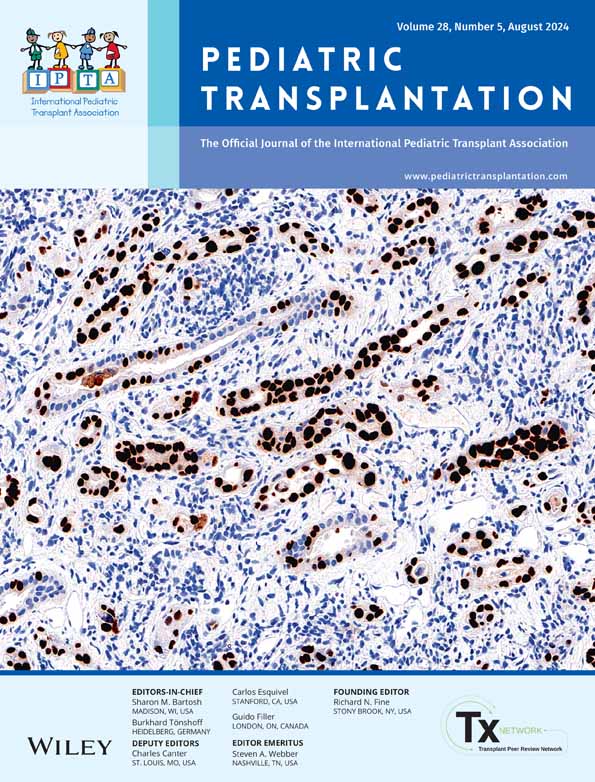Youngest Living Donor Liver Transplant for End-Stage Liver Disease in a 6-Month-Old With a Novel Aggressive Mutation in KIF12 Gene
Funding: The authors received no specific funding for this work.
ABSTRACT
Background
Kinesin family member 12 (KIF12) mutation-related cholestatic disorder represents a rare subtype of progressive familial intrahepatic cholestasis (PFIC), referred to as PFIC Type 8, with only 21 reported cases globally to date.
Methods
Here, we present a unique case of a 6-month-old boy diagnosed with homozygous KIF12 gene mutation, who successfully underwent a living donor liver transplant at our center for end-stage liver disease.
Results
This case marks the youngest patient of KIF12-related cholestatic disorder necessitating a liver transplant to date. The child initially presented with neonatal cholestasis and then developed infantile hepatic decompensation. Our report discusses the diagnostic process and management strategies employed. It underscores the importance of prompt diagnosis through clinical suspicion, biochemical parameters, and genetic testing, as well as the adoption of suitable management strategies, including the early contemplation of liver transplant in such exceptional and rare cases of genetic intrahepatic cholestasis.
Conclusion
KIF12-related genetic disease should be considered in neonatal cholestasis cases with high gamma glutamyl transpeptidase to differentiate from conditions like biliary atresia. Favorable outcomes post liver transplant stress the importance of early genetic testing and referral to liver transplant centers for unresponsive patients, potentially saving lives.
Conflicts of Interest
The authors declare no conflicts of interest.
Open Research
Data Availability Statement
The data that support the findings of this study are available from the corresponding author upon reasonable request.




